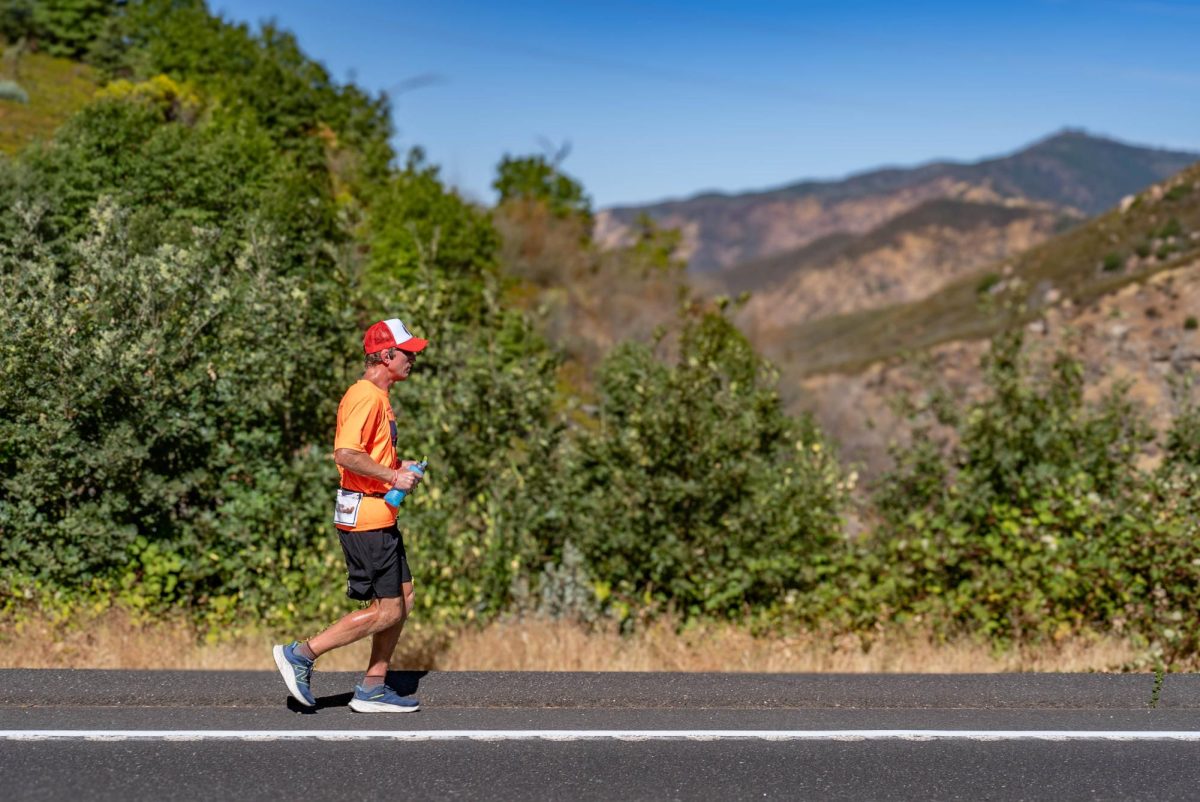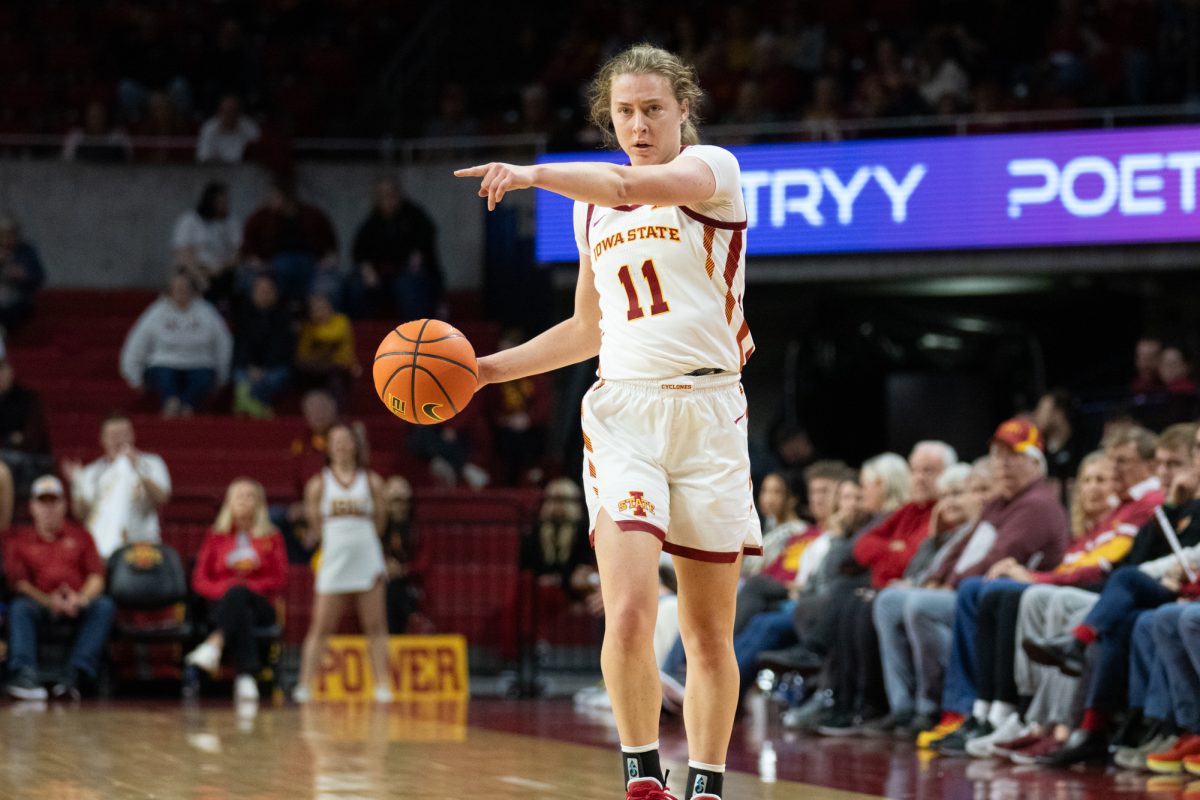Aviation Expo off to flying success
July 22, 1996
The Ankeny airport was the hot spot to be this weekend, literally.
The Greater Des Moines Aviation Expo took place last weekend and everything cooperated to make this weekend a fantastic exhibition.
The air show features a remote control model re-enactment of the World War II battle for Iwo Jima that has large enough pyrotechnics that the audience can feel the heat and shock of each explosion.
“We were very happy with the show,” said Paul Knapp, chairman of the Greater Des Moines Aviation Expo. “It came off excellent … All of the volunteers made it just great.”
In addition to “Striking Back,” the re-enactment of the battle for Iwo Jima, the Expo also had several other features, including three vintage aircraft: a Ford Tri-motor passenger aircraft from the early thirties, which was selling rides for $30, a Catalina PB-Y “flying boat” and a B-25 Mitchell medium bomber from World War II. B-25s such as this were the first American Bombers to attack Japan in WWII.
A pilot from the U.S. Marine Corp. also performed a “level three,” or flight capability demo in an AV-8B Harrier. The demo included a performance of the aircraft’s vertical take off and landing capability.
The Harrier is used by the Marines to provide close in air support for infantry and tanks and is the only jet fighter in the world that has vertical take off and landing capability.
Knapp said the Marines only give five “level three” Harrier Demos a year. “We were very lucky to get them,” Knapp said. “We’re trying to get some more military in, next year we’re trying to get the Blue Angels to fly here.”
Also on hand was the Vanguard Squadron, an aerobatic formation of three planes powered completely by ethanol fuel or “corn squeezins,'” as the team says.
The Vanguard squadron performed several maneuvers in their brightly painted yellow planes that defied gravity and sensibility, always flying in very close formation.
The squadron’s planes are painted yellow because of the ethanol fuel they use, and the words “ethanol powered” are painted in blue across the underside of the wings.
The Vanguard Squadron is based in Sioux Falls, S. D. and has a prime goal of promoting ethanol fuel in addition to aerobatics.
Biplane pilot and aerobat Joe Dooley was on hand to perform daredevil stunts in his red, white and blue biplane, soaring across the skies, rolling and spinning toward the earth and pulling up at the last second.
The “Striking Back” show was nothing less than incredible. The remote control, to-scale models are excellently built and painted. Both Japanese and American fighters battled across the skies, the Japanese fighters bombing tanks and patrol boats while the American fighters tried desperately to head off the attack.
During the battle, several planes went down, probably for lack of fuel rather than actual gunfire.
A 1/5 scale B-25 Mitchell with working bomb bay doors dropped bombs on a mock up of a Japanese aircraft carrier. As it did, the carrier burst into flames and oil spilled over the side of the ship, creating oil fires atop the water.
Then the real B-25 Mitchell bomber made a pass over the battlefield and as it did, pyrotechnicians set off a series of huge explosions, making it look as if the great bomber had just unloaded its deadly bombs on the earth below.
The finale was the flight of a model of the Enola Gay B-29 Superfortress, supposedly on its way to Hiroshima. As its fighter escort gradually dropped off, the model B-29 made its bombing run, let its deadly bomb fly and a huge explosion went off, creating a giant, black mushroom cloud.
“Hiroshima has been destroyed,” the MC said and the show was over with an old news broadcast reporting the Japanese surrender to America.
Of course all off these explosions are set by experienced pyrotechnicians — none of the planes actually carry any explosive devices.
Knapp said the pyrotechnics takes many hours, dollars and volunteer labor to set up the massive display of explosions.
“It takes [the pyrotechnicians] about 8 to 10 hours to prepare for the next show,” Knapp said. “We have a $150,000 budget, so each show costs about $50,000.”
There were shows on all three of the expo dates.
Knapp said the technicians as well as the model plane operators are all volunteers.
“We had at least 75 volunteers working at the various areas of the show,” Knapp said.
Knapp said the expo was scaled down a bit from the previous two years and had less of a budget.
“We had a quite a bit lower budget; we think we’ll make some money but we’re not sure,” Knapp said. “We also had a three day show instead of a four day show, but we probably had just as many people.”
Knapp said this year was excellent and the expo will only get bigger.
“We’re really looking forward to next year,” he said.






